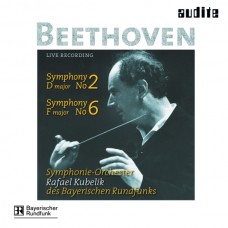貝多芬:第2&6號交響曲 L. v. Beethoven: Symphony No. 2 & No. 6
|
From the very beginning Beethoven considered himself to be an independent composer. As a young man, however, he could not avoid the influence of the great Viennese masters. Their works are so inextricably bound with the spirit of their age that Beethoven could not help but make use of their musical vocabulary. From the outset, nonetheless, he used these stylistic means to form a new musical language, a language immediately understood by all attentive listeners, who reacted either with enthusiasm or shock.
|
|
LUDWIG VAN BEETHOVEN Symphony No. 2 in D major, Op. 36 Adagio molto - Allegro con brio II. Larghetto III. Scherzo: Allegro vivace IV. Allegro molto LUDWIG VAN BEETHOVEN Symphony No. 6 in F major, Op. 68 'Pastorale' Symphonieorchester des Bayerischen Rundfunks | Rafael Kubelik I. Erwachen heiterer Empfindungen bei der Ankunft auf dem Lande. Allegro ma... II. Szene am Bach. Andante molto mosso III. Lustiges Zusammensein der Landleute. Allegro IV. Gewitter, Sturm. Allegro V. Hirtengesang, frohe und dankbare Gefühle nach dem Sturm. Allegretto |
編號 |
曲目 |
長度 |
作詞 |
作曲 |
演奏 |
樂團 |
演唱 |
指揮 |
試聽 |
|---|


